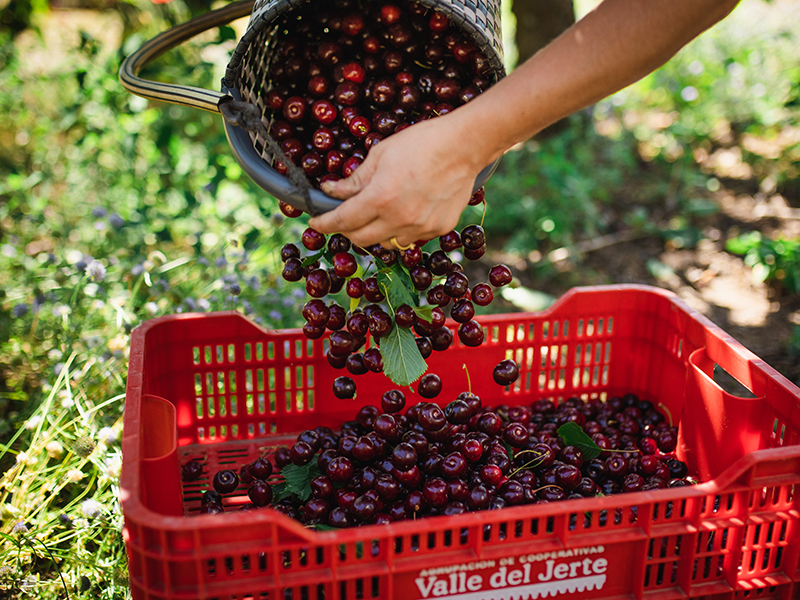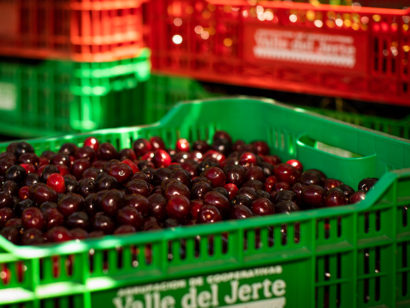This year, the cherry harvest in Spain is expected to be about 70% of last year’s crop, according to forecasts so far. Despite the announced rain front in calendar week 15 and 16, the harvest of soft cherry varieties will start towards the end of the month for the time being.
The southwestern regions of the country have increased mild temperatures during the winter months. This, in turn, affects the harvest – which is scheduled for mid-May in Extremadura (Valle del Jerte). Current estimates predict large quantities of cherries.
Should the rain decrease in the coming weeks, a quality harvest can also be expected in the northeast of Spain in the Tarragona area. So far, a loss of only 30% is predicted for both soft varieties – harvesting will begin at the end of calendar week 16 – and hard varieties – harvesting will begin in calendar week 20. In the neighboring region of Aragon, there has been a cold weather front, but this has only affected small areas of the growing regions in the lower parts of the valleys in terms of harvest. Almost simultaneously, soft varieties will start here in calendar week 16 and hard varieties in calendar week 20.
At the same time, dark weather fronts have spread over the southeast of the country, in the Alicante region, and have resulted in an expected harvest of only 60 to
70% of the soft cherry varieties can be harvested. The main harvest season will begin at the end of calendar week 16 and will receive growth from the hard varieties in calendar week 21. After already 10 years of production of the hard cherry varieties, this year the region around Murcia experiences a slight increase in production with new modern varieties from America.
In the choice of cherry varieties, a trend towards self-pollinating flowers can be seen. The first variety of “hard” cherries will be the self-pollinating Royal Tioga cherry. In the Tarragona region, the harvest of both the Royal Tiago, the Red Pacific, and the Nimba has been announced for calendar week 18. Overall, a particularly successful crop is expected in the southwestern part of Spain. The yield in the south and northeast is 30% lower due to the unstable climate.
April 2021


